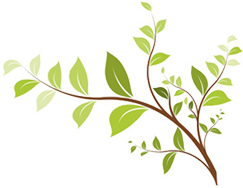From romantic symbols to emblems of hope, the historical meanings behind some of the most popular big-day blooms may surprise you.
If you’re planning a wedding with lots of personal touches — you’re getting married the same month you and the groom met three years ago! Wearing Mum’s veil! Serving the cocktail you had the night he proposed! — think about personalising your wedding day flowers too. But instead of basing your choices on colour and style alone, let the blooms’ historical meanings inform your decision too.
The “language” of flowers is a thing and has been for centuries. During Victorian times, for example, flowers were used to express emotions when words and gestures failed. Today, many couples follow this romantic practice and create bouquets and centrepieces with flowers whose meanings have some significance to them. While flowers with a love connection, like roses and carnations, are popular, there are many other meaningful traits like new beginnings (daffodil), faith (iris), and perseverance (hydrangea) to consider.
While most wedding flowers have good vibes and positive sentiments, you’ll want to steer clear of those whose meanings have a negative association. (Begonia symbolizes “beware”; tansy, “hostile thoughts.”) Colour plays a substantial role in a flower’s meaning too. Everyone’s favourite wedding flower, the rose, has different meanings depending on the hue. While a red rose symbolizes passion, a white rose means purity and a pink one signifies joy and admiration. The same goes for hyacinths: The white variety means loveliness, the blue kind represents constancy.
Whatever sentiment you want to convey on your wedding day, there’s sure to be a flower to your need. Just like every picture tells a story, every flower has a story to tell too.
Gipsophila
Like an extra in a movie that stays in the background, this popular bouquet and centrepiece filler — which signifies festivity — is there to support the star flowers. With tiny white clouds for petals, it deserves top billing of its own!
Calla Lily
When people think “wedding flower,” this bloom often comes to mind. With its trumpet shape and elegant air, the calla lily more than stands up to its meaning: regal.
Carnation
Beyond being just lapel decoration, carnations can be massed together for a lush look that’s affordable. The pink variety means gratitude, and white is pure love but stay away from striped, which represents refusal…
Chrysanthemum
Looking like a cross between a pompom and a daisy, mums are a full-bodied favourite of weddings for their variety of colour, shapes and sizes and their symbolism of joy.
Clematis
A climbing plant of the buttercup family with large showy petals, clematis could be considered a brainy flower — after all, it symbolizes ingenuity and mental beauty.
Daffodil
What do marriage and this shapely spring flower have in common? Both represent new beginnings, which is tailor-made for a bride and groom’s big day.
Lily
The symbol of modesty and virginity, the white variety of this timeless flower is a wedding staple. The other shades have significant meaning too: The orange lily symbolizes passion, while yellow represents gaiety.
Rose
If you want your bridal bouquet to tell the world how you feel about your groom, nothing says it better than red roses, which symbolize passionate love. Pink (admiration) and white (purity) say a lot too.
Sunflower
Big and lush, sunflowers — symbolic of dedicated love — are beloved for their striking appearance and look-at-me allure and are often used at rustic, country-themed nuptials.
Tulip
If it’s spring, it’s tulip time! This beloved beauty comes in many colours, each with a different meaning. Among them: Red means declaration of love, yellow is sunshine and the variegated kind symbolizes beautiful eyes.














